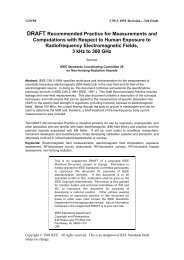An introduction to the quark model
An introduction to the quark model
An introduction to the quark model
You also want an ePaper? Increase the reach of your titles
YUMPU automatically turns print PDFs into web optimized ePapers that Google loves.
Few-charge systems His<strong>to</strong>ry of <strong>the</strong> <strong>quark</strong> <strong>model</strong> Mesons Baryons Multi<strong>quark</strong>s and o<strong>the</strong>r exotics Outlook<br />
Permutation symmetry for (qqQ)<br />
For instance Ξ − = (ssd) or Λ = (uds) in <strong>the</strong> limit where SU(2) is<br />
exact<br />
Ψ = ψ(x, y) ψs ψi ψc ,<br />
should be antisymmetric (A), given that ψc is A,<br />
For instance Λ ground state has I = 0 (A), and Sqq = 0 (A), while<br />
ψ(x, y) is symmetric (S) in x,<br />
For instance, ψ(x, y) ∝ exp[−a x 2 − b y 2 ] in HO.<br />
First orbital excitation of Λ? Keep I = 0. If ψ(x, y) is excited in y,<br />
i.e., ℓy = 1, <strong>the</strong>n keep Sqq = 0, thus Sqqs = 1/2 and two<br />
possibilities<br />
J = 1/2<br />
J = 3/2<br />
with <strong>the</strong> possibility of spin-orbit splitting among <strong>the</strong>m<br />
O<strong>the</strong>r orbital excitation of Λ? Yes, with ψ(x, y) now odd in x, and<br />
thus Sqq = 1, and various recoupling for Sqqs and J.<br />
JMR Quark Model

















